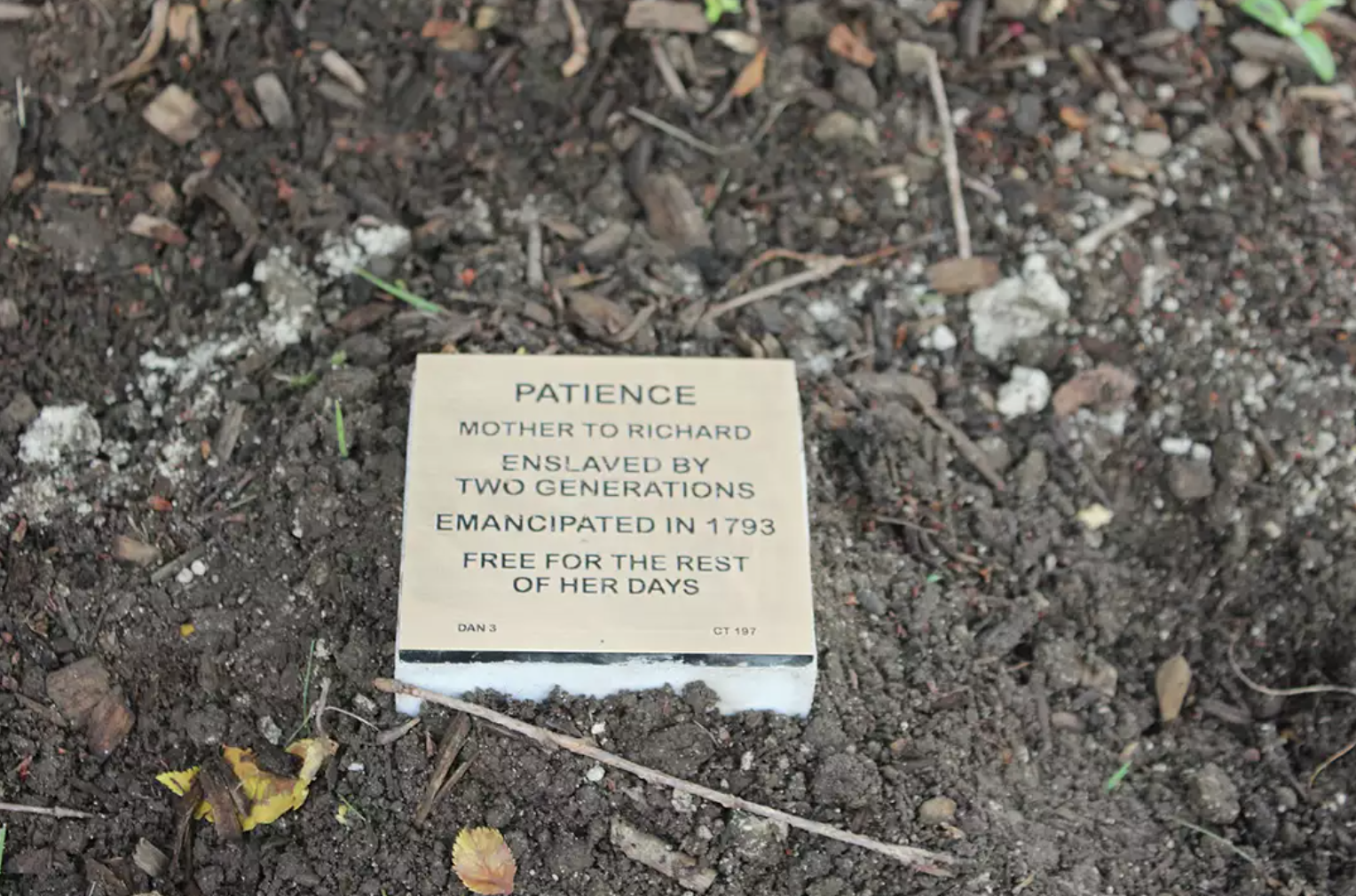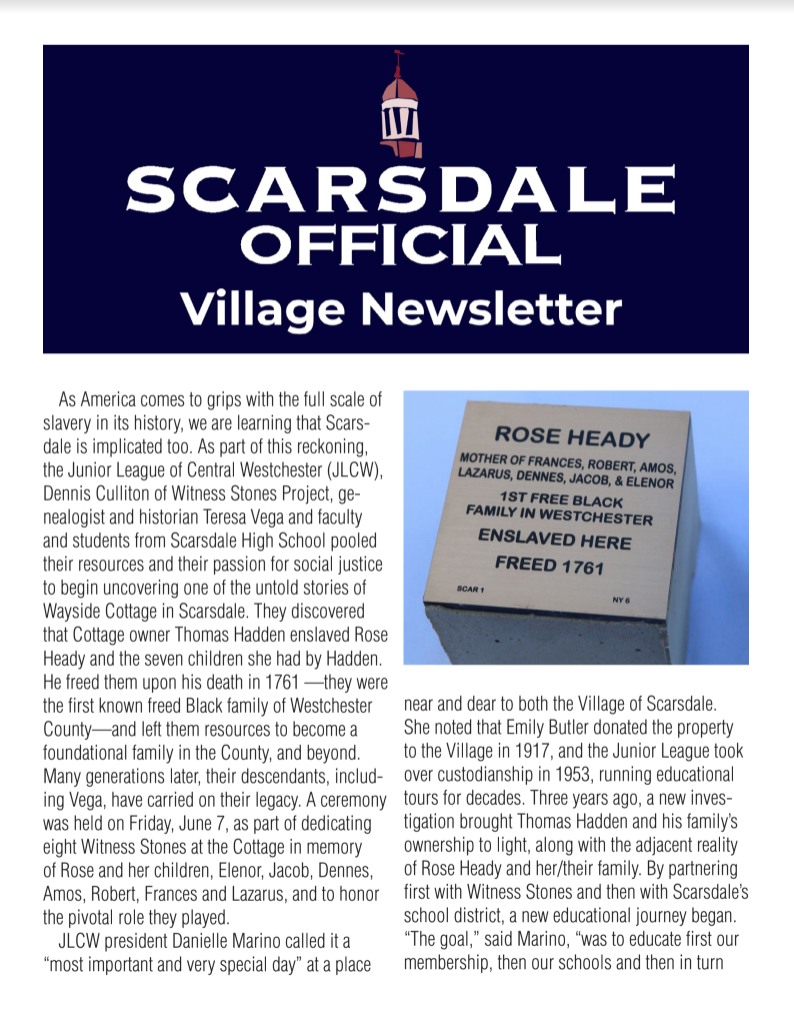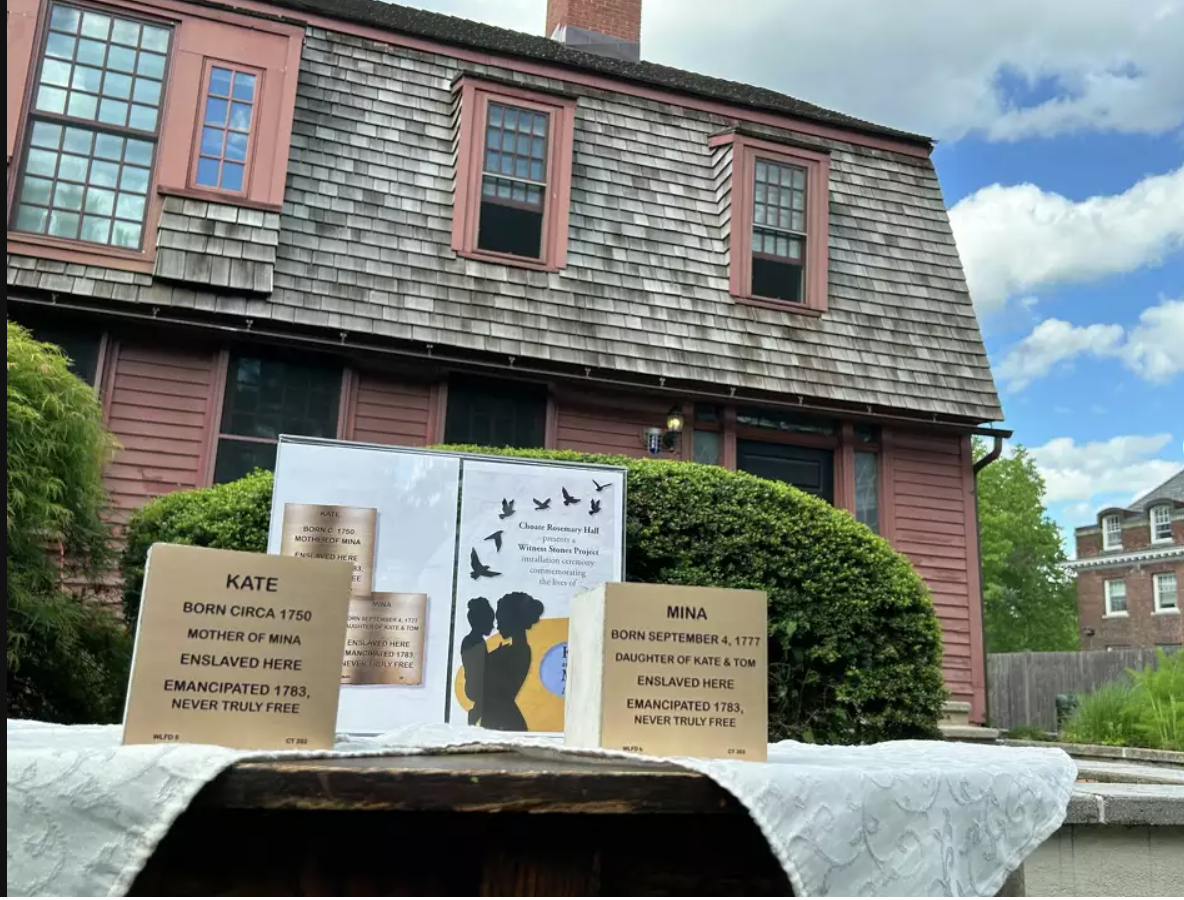
By Kendra Baker in the NewsTimes on June 8, 2024
DANBURY — Patience, an enslaved woman in Danbury who gained her freedom in 1793, became the third individual memorialized as part of a research project led by Wooster School students.
A stone commemorating Patience was placed at St. James Episcopal Church last week, following weeks of research by the school’s eighth grade team in partnership with the Witness Stones Project.
The Witness Stones Project works with schools and community groups to “restore the history and honor the humanity” of enslaved individuals in Connecticut through research, education and civic engagement.
Wooster School has been working with the organization for the past few years to teach students about the history of slavery in Connecticut. As part of the curriculum, students embark on a research project that culminates with the memorialization of formerly enslaved individuals from the area.
This year was the third time Wooster School students embarked on a Witness Stones Project.
In 2022, Wooster students installed a stone honoring a Danbury resident and Revolutionary War veteran named Nimrod at the Long Ridge United Methodist Church.
As was the case with Nimrod, Patience was enslaved in the 18th century and died free. She was emancipated after the death of her enslaver, Joseph Taylor, in 1793.
In addition to freeing all of his slaves, Taylor designated funds for the ongoing support of Patience — whom he described as “somewhat advanced in years” and a “good, kind and faithful servant” to him and his parents — and gave her all his household furniture, according to excerpts from his will.
Taylor is another connection Patience and Nimrod had, as they were both enslaved by him at one point. In 1765, Taylor sold Nimrod — who was about 4 years old at the time, according to the research by Wooster students in 2022 — to a man named Noble Benedict. Nimrod is believed to have joined the Revolutionary War a little over a decade later.
As noted on the Witness Stone recently placed in her honor at St. James Episcopal Church, Patience was enslaved by two generations of the Taylor family and had a son named Richard.




